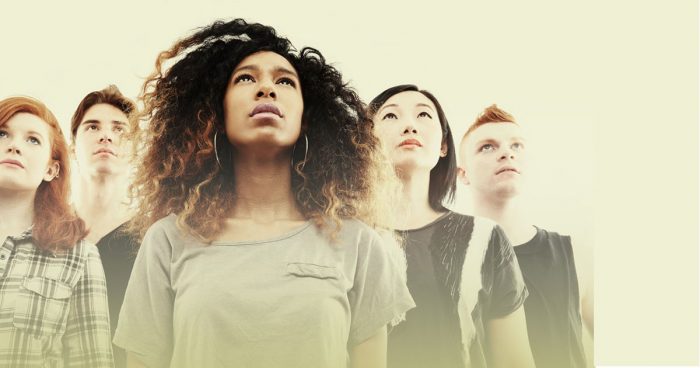Okay, if even the sound of the term “dark social” sends you running to tighten those parental restrictions on your kids’ iPads, let’s pump those breaks. The name sounds a lot more nefarious than what it actually refers to—there’s no radicalization or conspiracy theories happening here. But this ubiquitous problem might be of great concern to marketers. Allow us to explain.
“Dark social media” is a term that refers to social shares of online content without any referral information about the source. These shares happen in private channels, like personal messaging platforms. For example, remember the last time you clicked a link that a buddy passed along a link to your group chat, or checked out a blog post that your boss shared in Slack? That’s dark social. It’s not necessarily a new concept—the term was coined by Alexis Madrigal in this 2012 article for The Atlantic. But it’s becoming an increasingly important focus for marketers.
“This vast trove of social traffic is essentially invisible to most analytics programs,” Madrigal wrote in the piece. “It shows up variously in programs as ‘direct’ or ‘typed/bookmarked’ traffic, which implies to many site owners that you actually have a bookmark or typed [the domain name] into your browser. But that’s not actually what’s happening a lot of the time.”
Madrigal’s analysis of a coalition of media sites found that almost 69 percent of social referrals were dark—meaning that there was really no way to pinpoint exactly how two-thirds of all social views were sourced. More recent estimates suggest that dark social might have an even larger impact in the present day.
Earlier last week in a session at Advertising Week 2020, Brendan Gahan identified dark social as one of the largest opportunities on the horizon for brands looking to build stronger communities. Gahan, partner and chief social officer at advertising agency Mekanism, cited research that showed dark social representing 80 to 87 percent of all social shares worldwide. Dark social platforms like messaging apps (iMessage, GroupMe, WhatsApp, and the like) are where humans spend most of their time, he says, but that opportunity is largely untapped by brands.
“We’re over-indexing on Facebook,” Gahan said to sum up, “and there’s a huge, huge opportunity here with dark social.”
So what can brands do?
Whether tracking dark social sharing or participating in it, some industry leaders have differing perspectives as to what brands can do with this info. Firstly, Social Flow CEO Jim Anderson doesn’t think the inability to measure “dark social” sharing is as big a deal as it’s made out to be.
“It’s a problem that doesn’t need to be solved,” he said. “People have always shared stories they find interesting, whether ripping something out of a newspaper or magazine, emailing or texting a link, or mentioning a story in person. That kind of sharing is the original social media, and there’s nothing ‘dark’ about it at all.”
Madrigal, meanwhile, points out that “optimizing for social” only gets you so far. Since the very, very large majority of social shares come through private channels, he suggests that it’s more about the content of the piece, rather than the packaging of the piece. The simple message here, for those looking to increase pageviews: make something that people like, that they actually want to share. You can’t game a person’s interests, and their shared interests with their connections, like you can game Facebook or Google.
Finally, Gahan sees potential for brands to join these one-to-one communications by means of SMS campaigns or similar strategies. During his Advertising Week session, he cited a recent SMS campaign from Peace Out, a skincare company. it wasn’t a text campaign like the ones of yore, with boring, unbranded messages, but one that included engaging, dynamic, and branded visuals. In its first month, Peace Out’s campaign generated 21% of the company’s e-commerce revenue, and the ROI of the campaign was nearly 800%.
So depending on who you ask, there are a few different things that brands can do regarding dark social. But whichever way you turn, it starts with a better understanding of the phenomenon.




